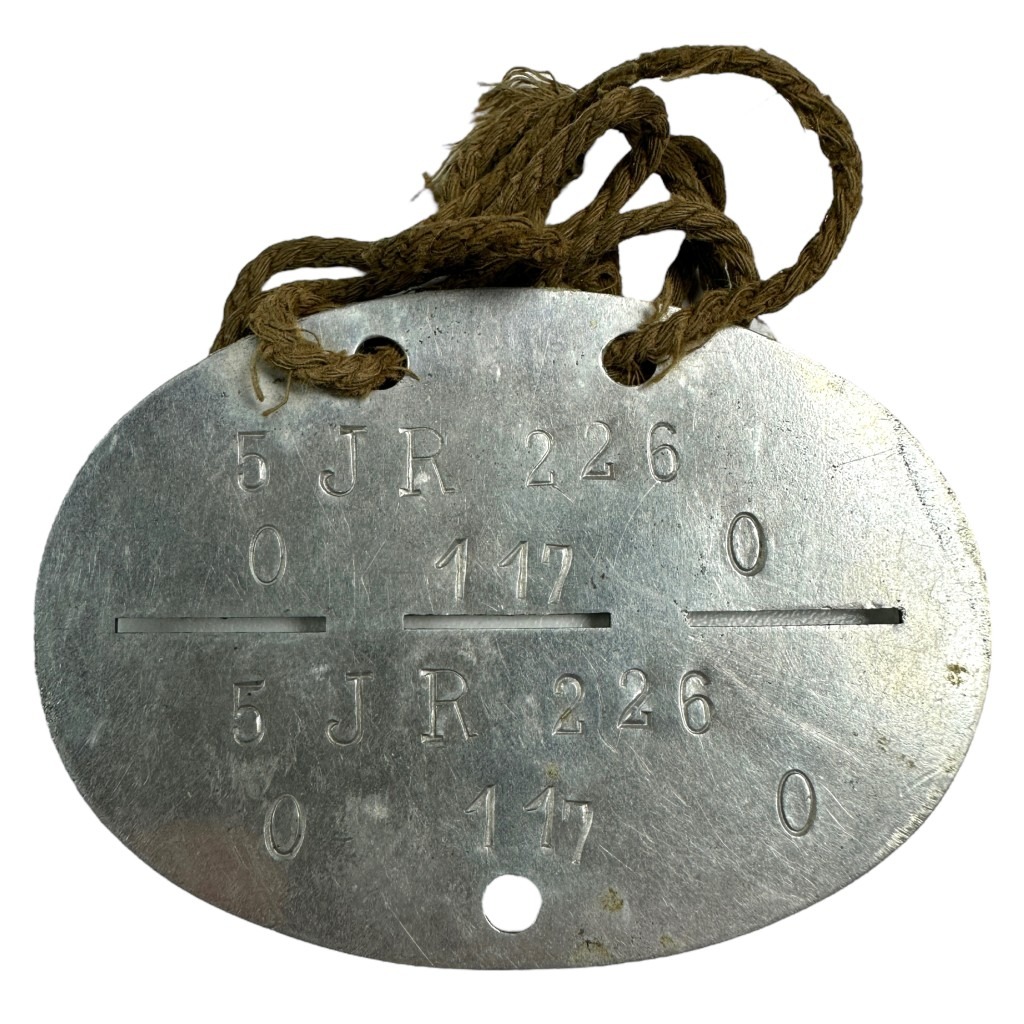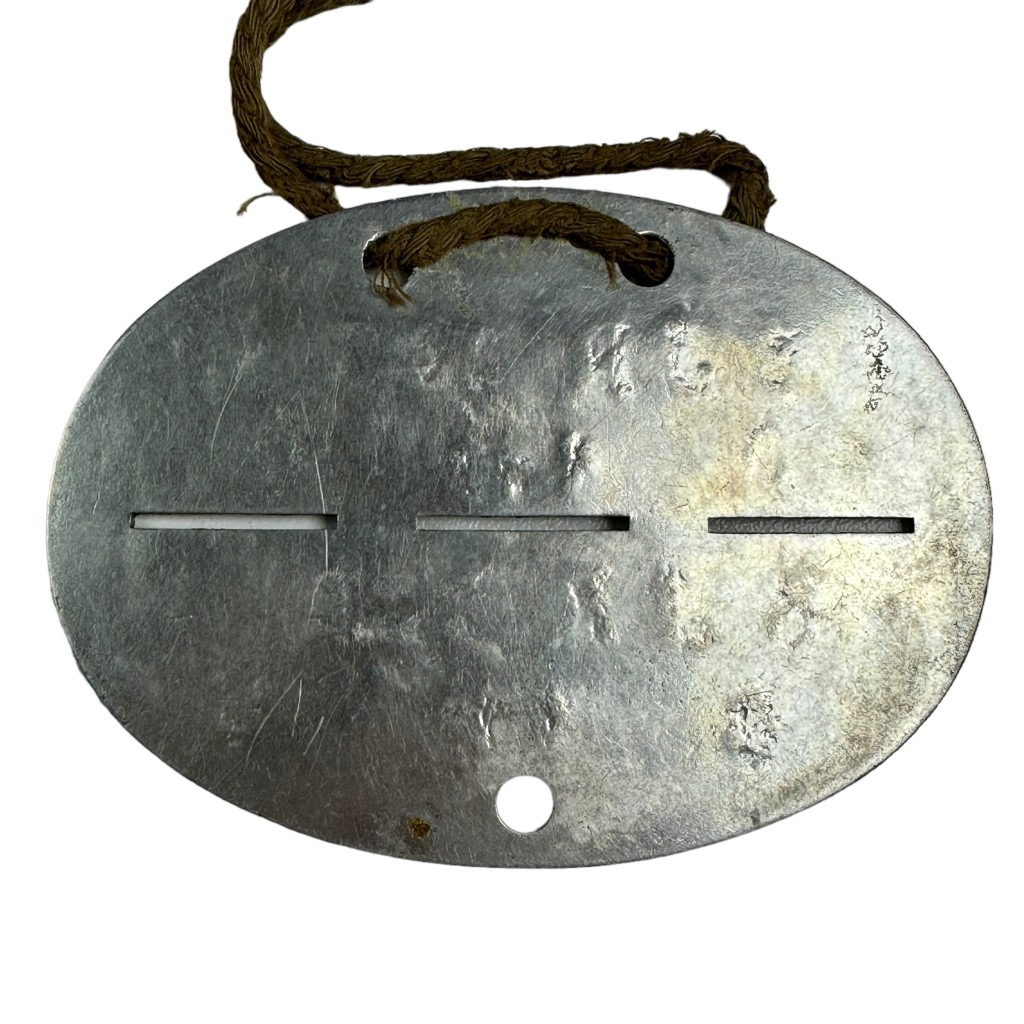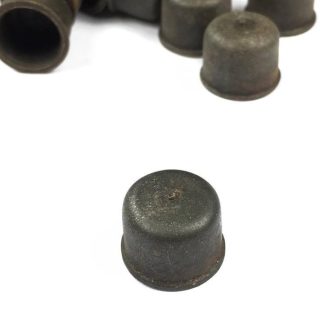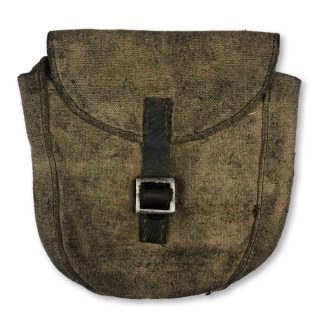Original WWII German Erkennungsmarke Infanterie-Regiment 226
65 €
This German Erkennungsmarke is in good condition and was worn by a member of Infanterie-Regiment 226.
The regiment was called up on August 26, 1939 as part of the formation of the 79th Infantry Division. It was formed in Darmstadt from the Infanterie-Regiment 115 of the 33rd Infanterie-Division. In mid-October 1939, the regiment under its commander Colonel Schreiber was located on the Reich border (Saar region), east of Infanterie-Regiment 208 under Colonel von Wedel. Infantry Regiment 212 under Colonel von Schwerin and the reconnaissance division under Major von Bonin joined the left wing of the division. As the division took over the section of the 58th Infantry Division on May 27, the I.R.226 was now on the right wing of the division. The Moselle as far as Diedenhofen was finally established as the division’s right border. On May 29, an order was issued to relieve the 167th Infantry Division, which was completed on May 31. On June 17, 1940, I.R.226 followed I.R.208 to Medewich. During the night of June 18-19, I.R.226 was brought across the channel without vehicles and deployed to the right of I.R.208. As the enemy had cleared the field by 5 o’clock, it was possible to advance further. By the evening of June 19, the area northeast of Mont was reached. On June 20, the regiment was involved in brief skirmishes with rearguards, but gained ground. It then stood with the beginnings in Rozeheure and was now to advance on St. Remy via Boingt.
The III./I.R.226 advanced on Portieux via St. Remy, the other two battalions were turned away at Boingt on Damas, which led to the encirclement of the enemy in the Bois de Charmes, where they surrendered. On June 21, the battlefield was cleared and booty was sighted. After the armistice agreement was signed, the division became an occupation force. The I.R.226 lay in and around Langres. On October 20, 1940, the staff of I.R.226 and III./I.R.226 had to be transferred to the 342nd Infantry Division. The departures were immediately supplemented by replacement troops. The division was loaded there before the start of the Yugoslavian campaign. The first parts arrived in Carinthia on April 13. However, they were never deployed there. Further training was carried out. From June 22 to 29, 1941, the division was deployed via Semmering-Vienna-Odersberg-Kattowitz-Lublin to the area around and south of Zamosc.
The breakthrough through the Stalin Line near Bielka – Hulanka took place from July 23 to 28. The fighting in the Korosten area dragged on for a long time, but the division was the first German division to reach the Pripjet on August 26. There it took over the security of the north-western front of Kiev, in the Chernobyl – Yanov area, until September 9th. The division, which crossed the Dnieper and the Desna at Gornostaipol at the beginning of September, pushed quickly northwards via Kosary, near Kobyshtschi as the foremost I.D. into the Kiev – Uman cauldron. From the area around Pyereyaslav, the division marched east through the now completely cleared cauldron at the end of September and met the enemy again at Gadjach on the Pssjol. The pursuit continued south along the Worskla until it ended in the ravine around Kharkov. The advance on Belogrod continued, which caused great difficulties due to changes in the weather. Thus the infantry had to be brought forward with the help of tracked vehicles at the v. Aulock (I.R.226) advance unit before Belogrod was taken by them on October 24.
This marked the beginning of the winter fighting on the upper Donets, whereby the division had no contact with the enemy for the first time as the enemy withdrew to the Oksol. The I Battalion was subordinated to the I.R.208. Its first battalion joined Regiment 226. On July 3, the regiment crossed the Oskol near Lawy. That same evening, after occupying Soloti, it was attacked by strong forces. On July 16, the Don was reached at Migulinskaya, the village itself was taken. At the end of September, the regiment took over securing the Don in the Kletskaya section. On October 17, the division was ordered to Stalingrad. During the last period, the 79th ID was supplied with replacements. The regiment remained in its position.
Perfect for the militaria or World War II collection!
Article number: 12722
Originele WWII Duitse Erkennungsmarke Infanterie-Regiment 226
Deze Duitse Erkennungsmarke is in goede conditie en werd gedragen door een lid van Infanterie-Regiment 226.
Het regiment werd op 26 augustus 1939 opgeroepen als onderdeel van de vorming van de 79e Infanterie-Division. Het werd gevormd in Darmstadt uit het Infanterie-Regiment 115 van de 33e Infanterie-Division. Midden oktober 1939 bevond het regiment zich onder commandant kolonel Schreiber aan de rijksgrens (Saarstreek), ten oosten van Infanterie-Regiment 208 onder kolonel von Wedel. Infanterie-Regiment 212 onder kolonel von Schwerin en de verkenningsdivisie onder majoor von Bonin voegden zich bij de linkervleugel van de divisie. Omdat de divisie op 27 mei de sectie van de 58ste Infanteriedivisie overnam, bevond het I.R.226 zich nu op de rechtervleugel van de divisie. De Moezel tot aan Diedenhofen werd uiteindelijk de rechtergrens van de divisie. Op 29 mei werd het bevel gegeven om de 167ste Infanteriedivisie af te lossen, wat op 31 mei voltooid was. Op 17 juni 1940 volgde I.R.226 I.R.208 naar Medewich. In de nacht van 18 op 19 juni werd I.R.226 zonder voertuigen over het kanaal gebracht en rechts van I.R.208 ingezet. Omdat de vijand het veld tegen 5 uur had verlaten, was het mogelijk verder op te rukken. Tegen de avond van 19 juni werd het gebied ten noordoosten van Mont bereikt. Op 20 juni was het regiment betrokken bij korte schermutselingen met achterhoedes, maar won terrein. Het stond toen aan het begin in Rozeheure en zou nu oprukken naar St. Remy via Boingt.
Het III./I.R.226 rukte op naar Portieux via St. Remy, de andere twee bataljons werden afgeslagen bij Boingt op Damas, wat leidde tot de omsingeling van de vijand in het Bois de Charmes, waar ze zich overgaven. Op 21 juni werd het slagveld ontruimd en de buit gezien. Na de ondertekening van de wapenstilstand werd de divisie een bezettingsmacht. De I.R.226 lag in en rond Langres. Op 20 oktober 1940 moest de staf van I.R.226 en III./I.R.226 worden overgeplaatst naar de 342nd Infantry Division. Het vertrek werd onmiddellijk aangevuld met vervangende troepen. De divisie werd daar geladen voor het begin van de Joegoslavische campagne. De eerste onderdelen arriveerden op 13 april in Karinthië. Ze werden daar echter nooit ingezet. Er werd verder getraind. Van 22 tot 29 juni 1941 werd de divisie via Semmering-Wenen-Odersberg-Kattowitz-Lublin ingezet in het gebied rond en ten zuiden van Zamosc.
De doorbraak door de Stalinlinie bij Bielka – Hulanka vond plaats van 23 tot 28 juli. De gevechten in het gebied Korosten sleepten zich lang voort, maar de divisie was de eerste Duitse divisie die op 26 augustus de Pripjet bereikte. Daar nam het de beveiliging van het noordwestelijke front van Kiev over, in het gebied Tsjernobyl – Janov, tot 9 september. De divisie, die begin september de Dnjepr en de Desna overstak bij Gornostaipol, rukte snel op naar het noorden via Kosary, bij Kobyshtschi als de voorste I.D. in de ketel Kiev – Uman. Vanuit het gebied rond Pjerejaslav marcheerde de divisie eind september oostwaarts door de nu volledig ontruimde ketel en ontmoette de vijand opnieuw bij Gadjach aan de Pssjol. De achtervolging ging verder naar het zuiden langs de Worskla tot het eindigde in het ravijn rond Charkov. De opmars naar Belogrod ging door, wat grote moeilijkheden opleverde door weersveranderingen. Zo moest de infanterie met behulp van rupsvoertuigen van de opmarseenheid v. Aulock (I.R.226) naar voren worden gebracht voordat Belogrod op 24 oktober door hen werd ingenomen.
Dit markeerde het begin van de wintergevechten aan de bovenloop van de Donets, waarbij de divisie voor het eerst geen contact met de vijand had toen de vijand zich terugtrok naar de Oksol. Het I Bataljon werd ondergeschikt gemaakt aan het I.R.208. Het eerste bataljon sloot zich aan bij regiment 226. Op 3 juli stak het regiment de Oskol over bij Lawy. Diezelfde avond, na Soloti bezet te hebben, werd het aangevallen door sterke troepen. Op 16 juli werd de Don bereikt bij Migulinskaya, het dorp zelf werd ingenomen. Eind september nam het regiment de beveiliging van de Don in de Kletskaja-sectie over. Op 17 oktober kreeg de divisie het bevel om naar Stalingrad te gaan. Tijdens de laatste periode werd de 79th ID voorzien van vervangingen. Het regiment bleef op zijn positie.
Perfect voor de militaria of Tweede Wereldoorlog collectie!
Artikelnummer: 12722
Out of stock





